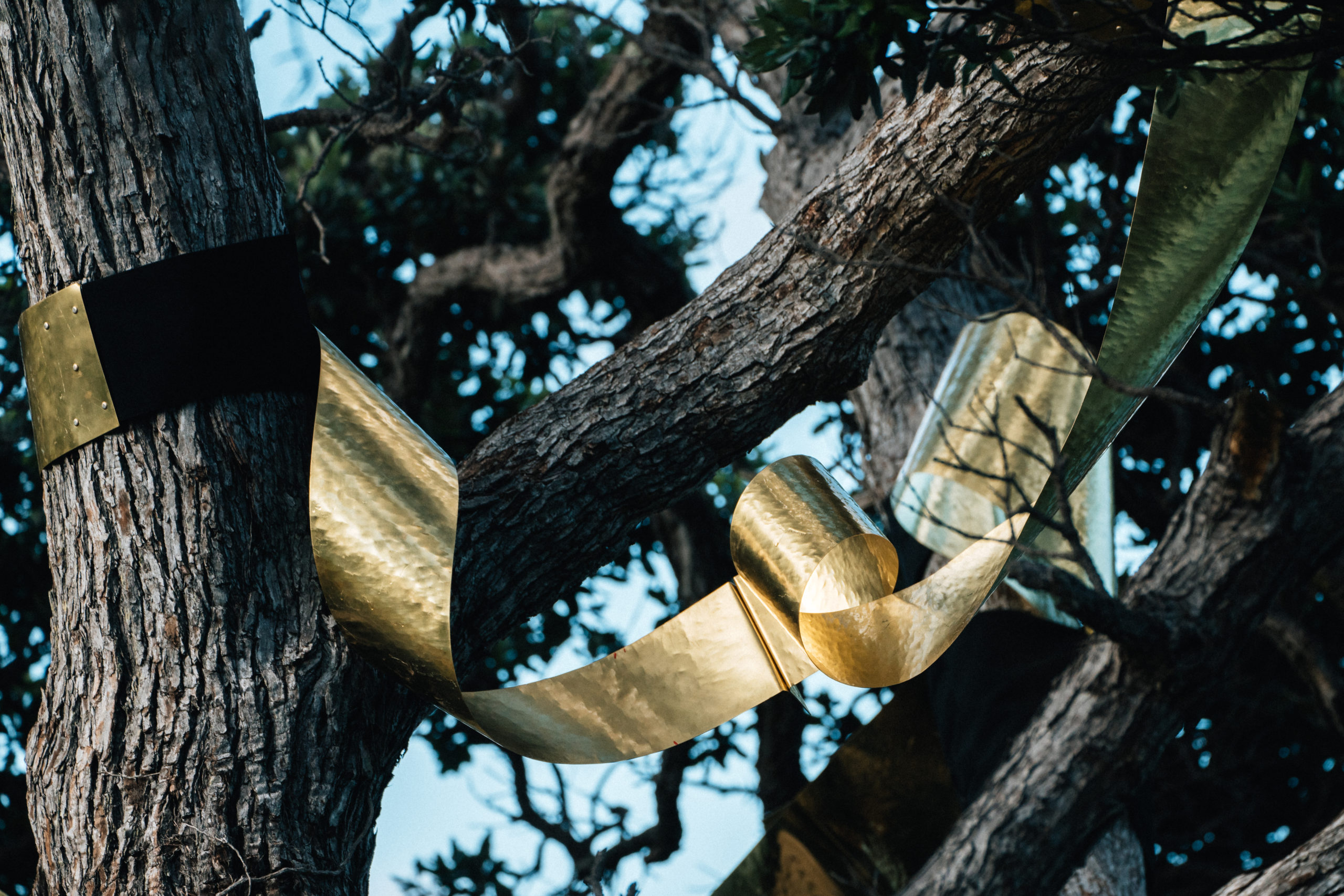
Louise McRae, Kodama, The Spirit of a tree, 2022
0.7mm thick beaten and riveted brass sheet, marine grade sealant, webbing
As in many of Aotearoa’s northern coastal areas, in early summer, the lush green of Waiheke’s vegetation becomes inflamed by the crimson flowers of the pōhutukawa tree. Louise McRae offers a homage to the tree with Kodama, The spirit of a tree. In Japanese folklore, Kodama are tree spirits that dwell in forests. They inhabit the oldest trees, and their presence is recognised by many as a sign of an ecosystem’s health. Emerging scientific studies on the interconnection of tree root systems and fungal networks, and this as the basis of soil health, provide an analogue to this ancient knowledge and further reason to value these elders of the natural world.
“It thrives where others cannot,” the artist says, “It stands with its roots in rock, facing all the Pacific can throw at it. I pay homage through this work and hope to lure others, to stop, to see, to celebrate this tree.”
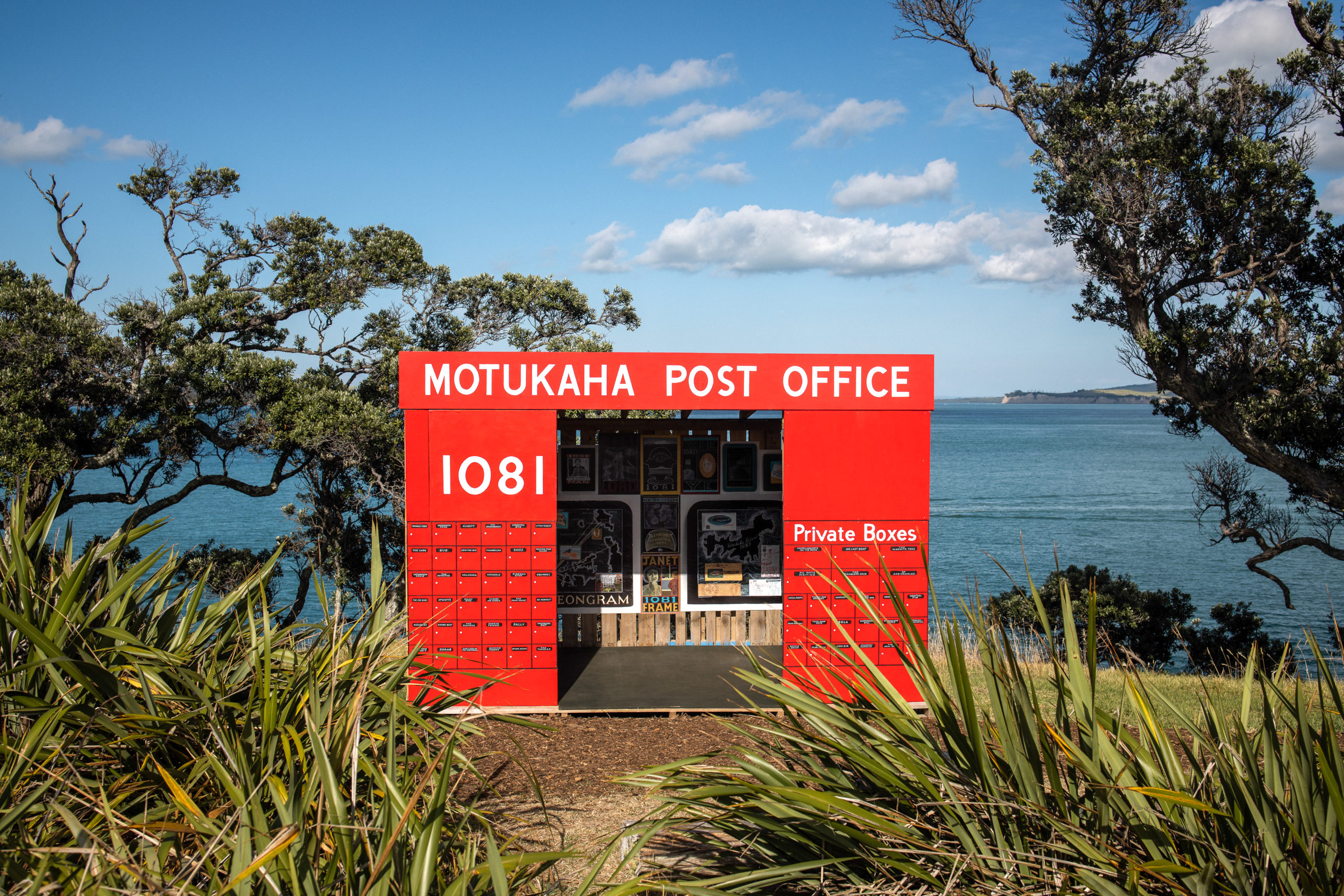
Denis O’Connor, The Last Post Office, 2022
Wood, corrugated iron, printed corflute. Approx. 2700 x 4400 x 2700mm
Over fifty years of artmaking and publishing – including material excursions through clay, limestone, slate, found objects; and writing for art magazines and books – Denis O’Connor’s commitment to language is unwavering. From collaborations with our finest poets to cross-genre installation projects and documentary filmmaking – in all of these artefacts, O’Connor sees woven vernacular histories of place and people, theatrical testimonies of lives and the relationships that animate them.
The Last Post Office revives Waiheke’s written history in a large-scale, architectural facsimile of the island’s post offices. Many of the names on the post boxes are those of singular characters from the island, while others reference local in-jokes and folklore. Brought together for this installation, O’Connor offers a homage to Waiheke’s rich social history and the written word’s enduring power.
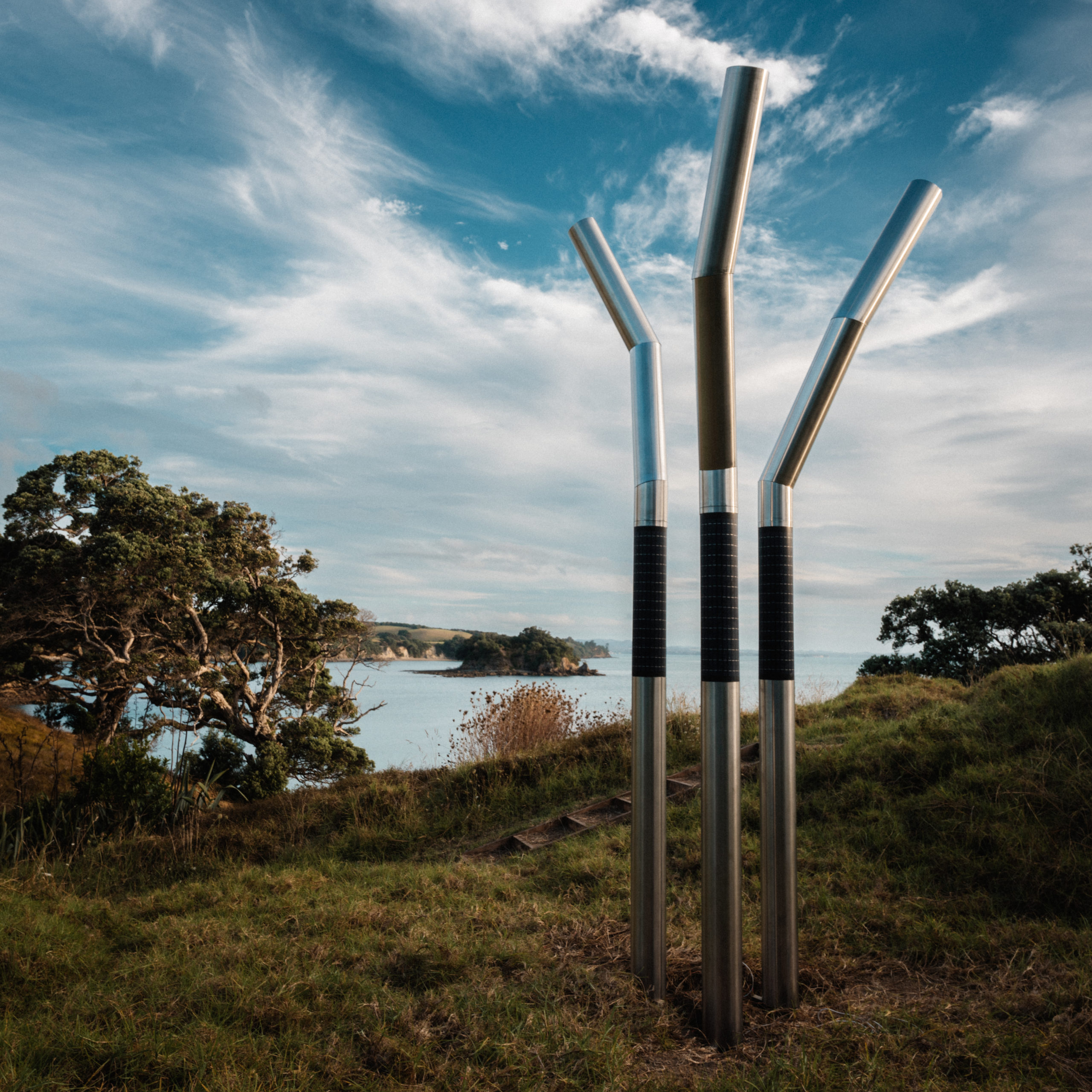
Aiko Groot, Three, 2022
Stainless steel tubes, integrated solar panels, 4800 x 200m
As avatars and artificial intelligence become increasingly ubiquitous in our homes and public spaces, ‘the uncanny valley’ has entered the cultural lexicon. Naming the unease we feel upon encountering these technologies when they appear just a bit too-human and a bit too close to home.
Aiko Groot’s Three prompts a similar unease through technology’s mimicry of nature. A trio of trunks, tall like nikau palms but fabricated from stainless steel, are inlaid with solar panels, and programmed to respond at-random to the available sunlight in a prosthetic imitation of photosynthesis.
Like the encounter with our own technologically manipulated image, there is something distinctly unnerving about Groot’s sculptures and their slow, unpredictable movements–but perhaps even more so for the fact that we are excluded from the exchange. Though they are beguiling, this meeting of technology and ecology leaves us somewhere between organism and algorithm, which is to say, left out and unable to make sense of either.
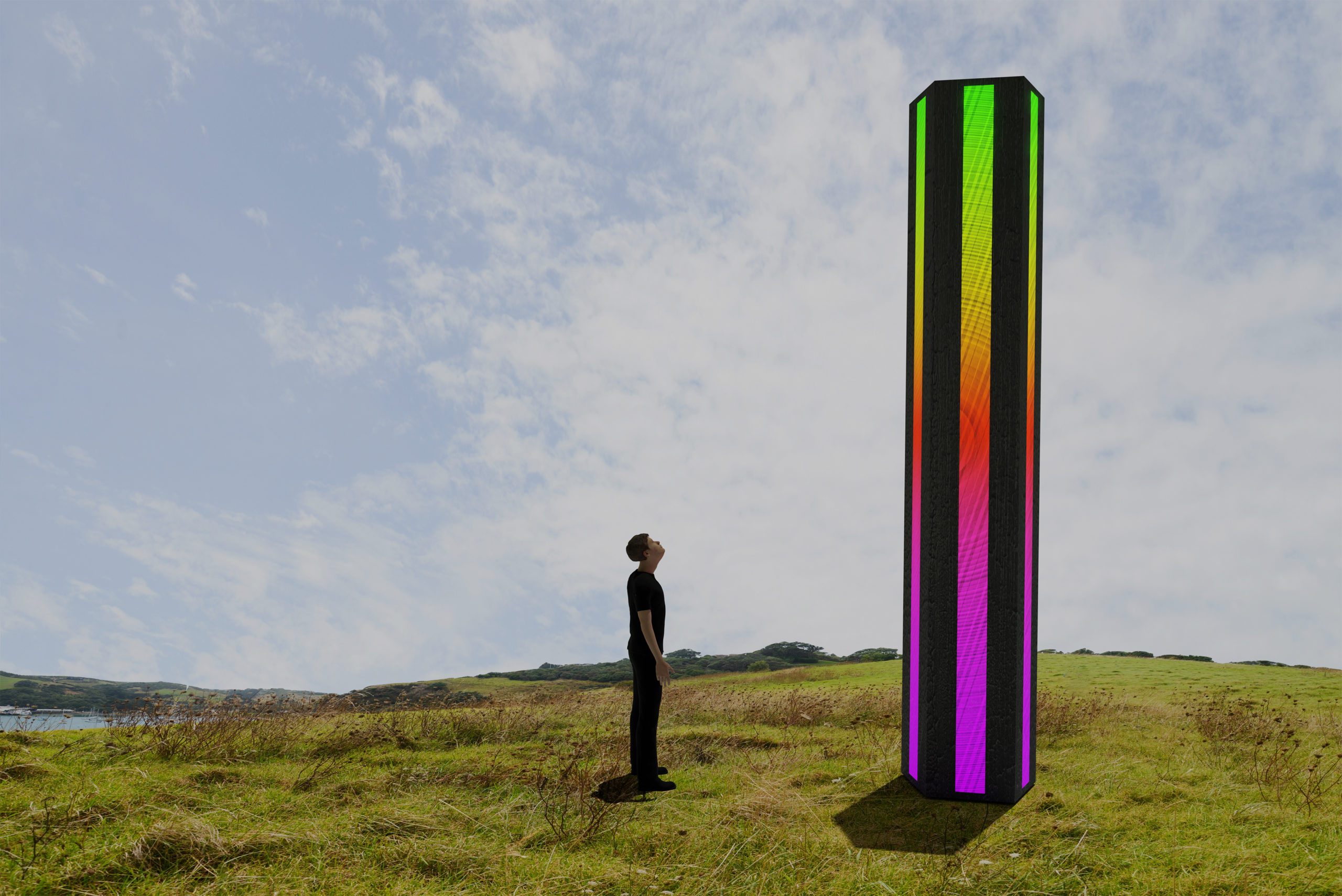
Tyler Jackson, Sentinel, 2022
Stainless steel, radiata pine, charred using the shou-sugi ban techique, LED lighting, acrylic glass, Raspberry Pi mini computer. 5000 x 600mm.
The natural form of the monolith belies one of the more enduring yet transmutable mythologies of our culture. Originally used to describe large, naturally occurring stone blocks, the term was later applied to similar forms erected for religious and ritual purposes by ancient worshippers and finally became synonymous with extra-terrestrial life thanks to science-fiction texts like Stanley Kubrick’s ‘2001: A Space Odyssey’.
This history makes the monolith a bridge between geology, cosmology, and technology, converging in Wellington-based artist Tyler Jackson’s interpretation of the form.
A charred timber cladding contrasts with LED lights inset into the sculpture’s body. These change colour according to an internal computer programme and sensors which detect nearby movements and changes in weather systems, giving the pillar unnerving omniscience over its surroundings.
Whether organic, archaeological, or altogether alien, Jackson’s monolith, in the form’s tradition, is profoundly mysterious, carrying the promise, both daunting and liberating, of an as-of-yet unknown elsewhere.
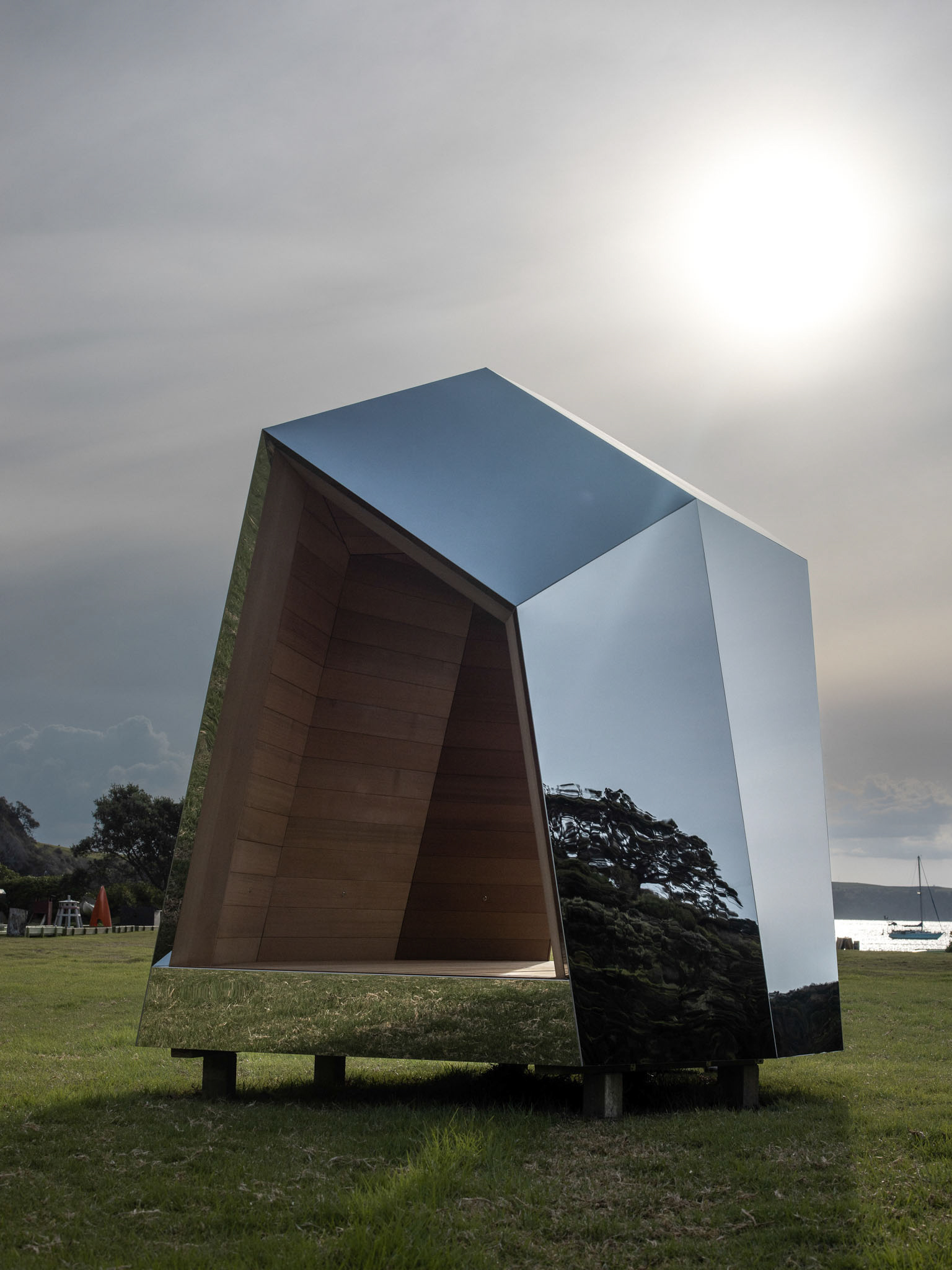
Jonas Raw, Reflect, 2022
Fitted with polished steel panels, Reflect’s irregular architecture mirrors yet distorts the surrounding seascape. From afar, it might be perceptible only as a subtle wrinkle in the fabric of the universe, as the suggestion of a hidden and somewhat otherworldly aperture through which to pass.
On the other side of this wrinkle, visitors will find themselves as if transported to another time and place which embraces the body within an impossible quiet, gentle warmth and the earthy scent of the structure’s minimalist cedar paneling.
The work’s creator, Jonas Raw, hopes that this illusion of heading somewhere inside the earth will prompt visitors to retreat inside themselves. To take a moment during their walk on the sculpture trail for stillness and reflection and enjoy being together in thought in the sheltered space he has carefully crafted.
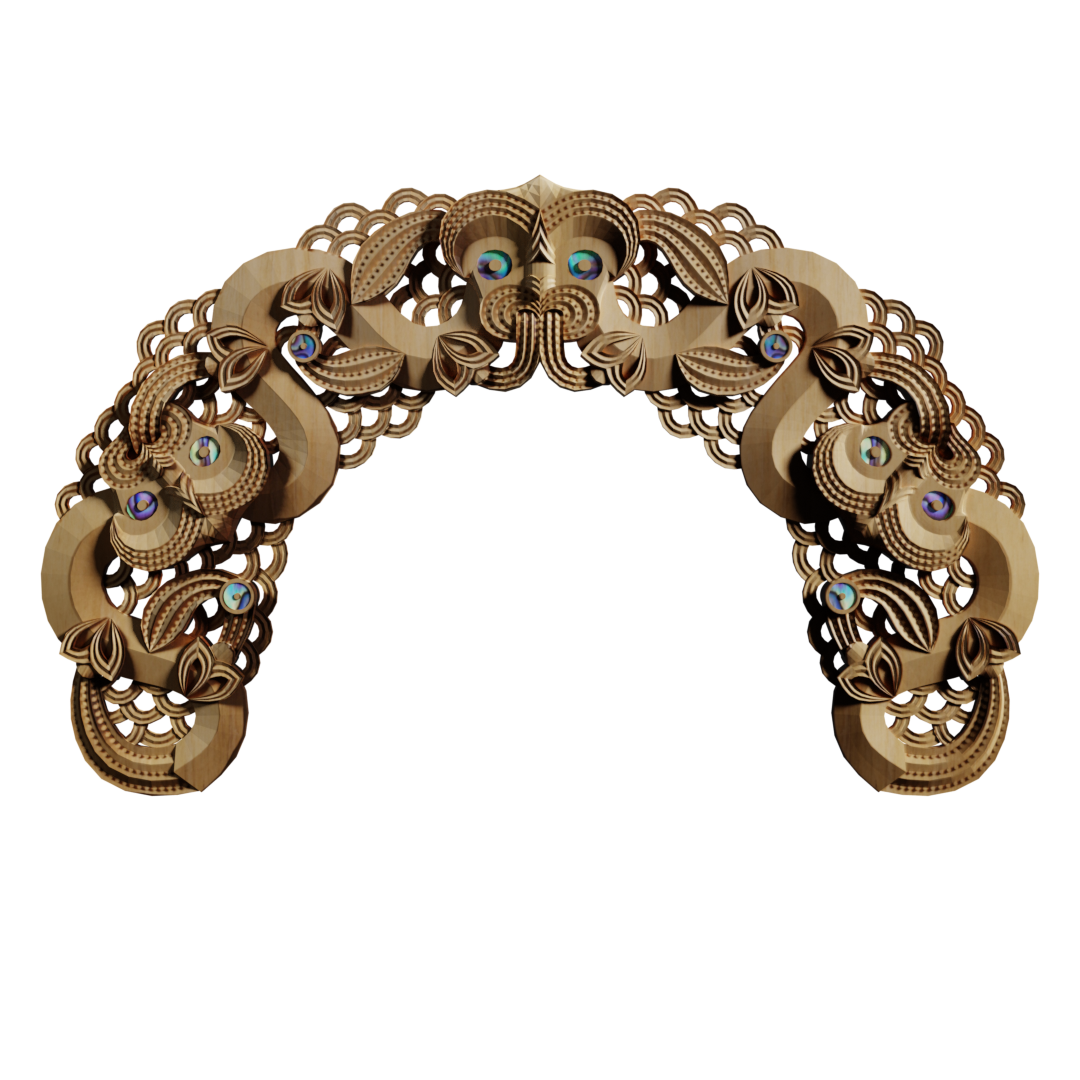
Kereama Taepa, WahARoa, 2022
Augmented Reality, digital/interactive experience accessed through Instagram using the QR code.
Kereama Taepa’s practice is centred on the overlap between traditional Māori art forms and knowledge with digital technologies and spaces. Working with media such as 3D printing and Virtual Reality, he fashions the digital landscape as an indigenous one, challenging the idea of the web being an anonymous space and history being erasable at the click of a button.
By scanning a QR code displayed at the entry to the ticketing marquee, visitors will be able to access Taepa’s latest work, WahARoa, a ‘carved’ gateway rendered using Augmented Reality. This follows the tikanga of a pōwhiri.
The work recreates the crucial moment of encounter at the threshold of the marae, where visitor and host alike acknowledge one another’s mana, exchange intentions, and call upon atua to witness the meeting.
WahARoa embodies a kaupapa of honouring and fostering connections between past, present, and future, and the physical and spiritual worlds, using familiar digital technologies to encourage visitors’ consideration of these things as they arrive at the island to start walking the sculpture trail.
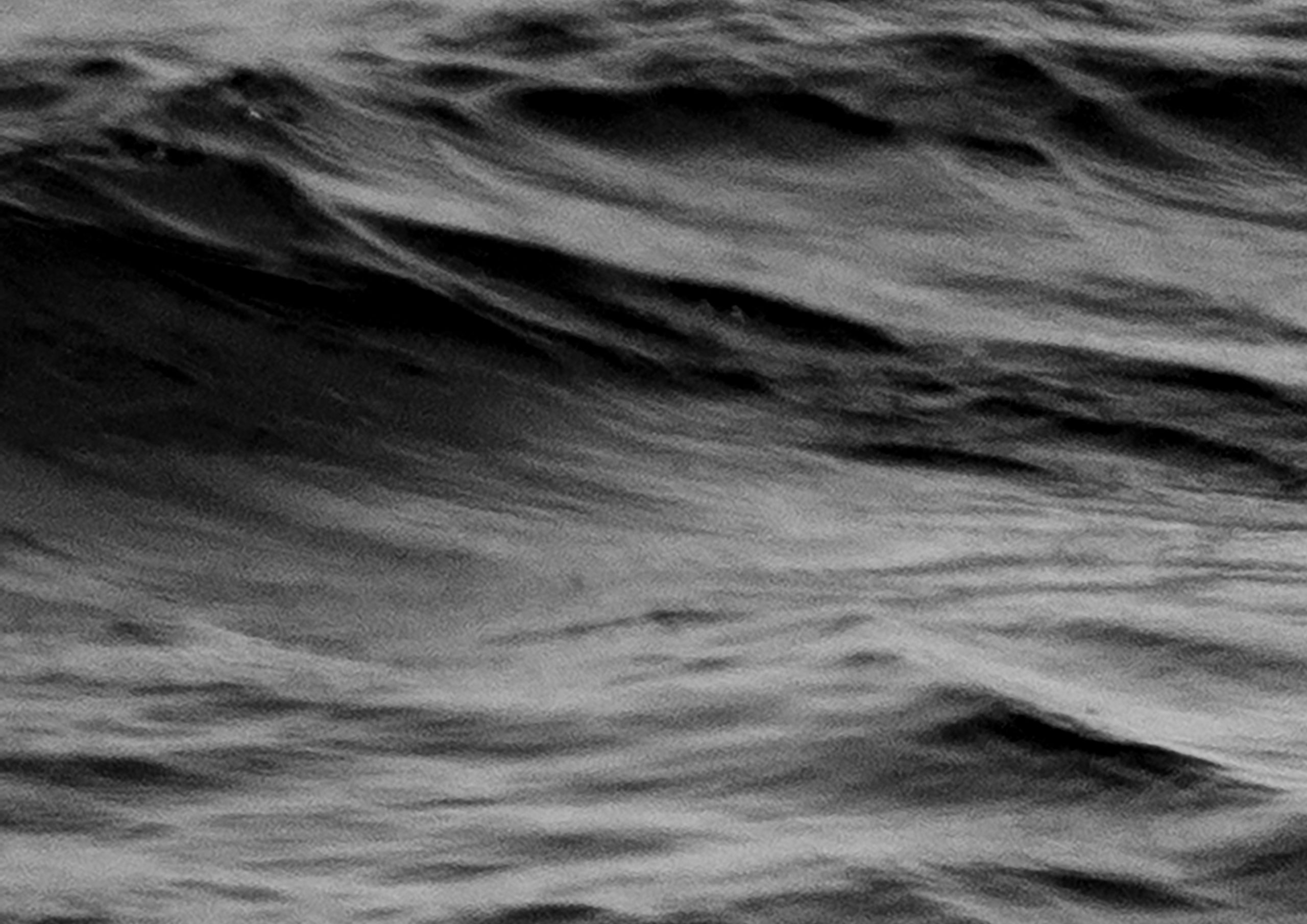
Melissa Laing, A Platform from which to look at the sea, 2022
MP3 audio 25 min. Tawa, pine, decking oil. 700 x 2000 x 3000mm.
In this artwork comprising two parts, Melissa Laing reinscribes the ordinary act of transit across the Waitematā Harbour as one of wayfinding through a landscape of ideas and experiences, many of them overshadowed or neglected among the multiple enterprises which animate the thoroughfare of the gulf daily.
An audio accompaniment to the ferry journey can be activated at the mainland terminal. The track weaves personal and civic histories, conceptual provocations, and ambient sound effects, all synced with the sensory experience of the passage, to give an expanded and embodied account of the Hauraki Gulf and the politics and poetics of its use and misuse.
The second component of the artwork is a platform on the headland carved to look like the ocean surface. Laing offers this part of the work as an opportunity for visitors to stand looking back to the city and reflect on the tapestry of social ecologies knitted together by this body of water as it wraps around the Auckland isthmus.







